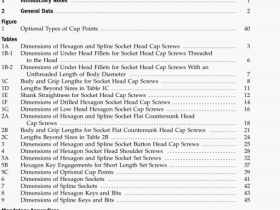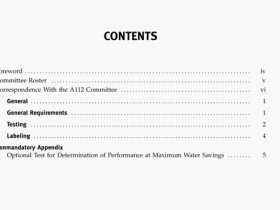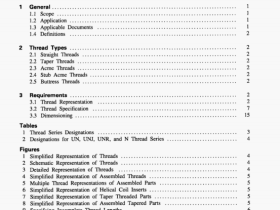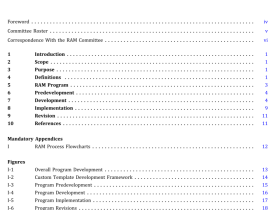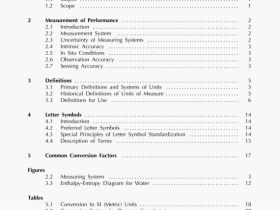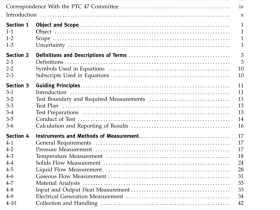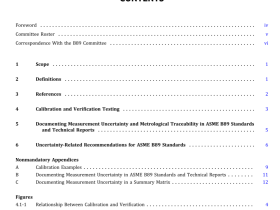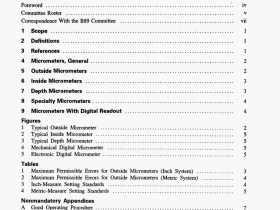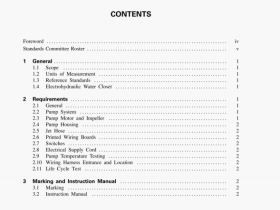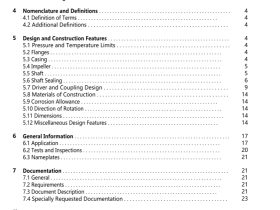ASME B18.6.3-2003 pdf download

ASME B18.6.3-2003 pdf download.Machine Screws and Machine Screw Nuts.
Recess gaging values are included in the respective dimensional tables, including the reference dimensions of recess diameter, wing width, and total recess depth. The gaging method and specifications for gages are contained in Appendix III.
Recess wobble gages, gaging procedures, and permissible limits are given in Appendix IV.
2.1.4 Slot. The depth of the slot in slotted head screws shall be measured, parallel to the axis of screw, from the top of the head to the intersection of the bottom of the slot with the head surface or bearing surface.
The width of the slot shall be measured perpendicular to the axis of the screw, from the theoretical intersection of the bottom and one side of the slot, to the theoretical intersection of the bottom and the other side of the slot.
Unless specified by the purchaser, the slot width may be slightly tapered from the bottom to the top, or straight, at the option of the manufacturer.
2.1.5 Feature Positional Tolerances. The positional relationship of the heads and driving provisions of screws with respect to the shanks of screws (formerly defined as eccentricity) shall be as follows.
(a) True Pos it ion of Head. The axis of the head shall be located at true position relative to the axis of the screw shank within a tolerance zone having a diameter equivalent to 6% of the specified maximum head diameter, or maximum width across flats of hex and hex washer heads, regardless of feature size.
(b) True Position of Recess. The recess in cross recessed head screws shall be located at true position relative to the axis of the screw shank within a tolerance zone having a diameter equivalent to 12% of the basic screw diameter or 0.030 in., whichever is greater, regardless of feature size.
(c) Trite Position of Slot. The slot in slotted head screws shall be located at true position relative to the axis of the screw shank within a tolerance zone having a diameter equivalent to 12% of the basic screw diameter or 0.020 in., whichever is greater.
2.1.6 Underhead Fillets. Machine screws shall have a definite underhead fillet large enough to ensure that full fastener strength is achieved. The radius of the fillet under countersunk head screws shall be no greater than 40% of the basic screw diameter. The radius of the fillet under truss heads and number 6 sized pan heads shall be no greater than 25% of the basic screw diameter. The radius of the fillet under all other head styles shall he no greater than i5% of the basic screw diameter.
2.2 Length
2.2.1 Measurement. The nominal length of screw L shall be measured, parallel to the axis of screw, from the extreme point to the plane of the bearing surface for screws having perpendicular bearing surface type heads, and to the theoretical intersection of the top surface of head with the head diameter for screws having counter sunk type heads. For all oval heads, the overall length L。shall be measured, parallel to the axis of the screw, from the extreme point to the top of the head, where:
2.3 Threads
2.3.1 Machine Screws. The threads on machine screws, except for the No. 0000, No. 000, and No. 00 sizes, which are covered in Appendix V, shall be Unified Standard, Class 2A, UNC and UNF series, or UNRC and UNRF series, at option of manufacturer, in accordance with ASME B1.1. For threads with additive finish, the maximum diameters of Class 2A may be exceeded by the amount of the allowance; that is, the Class 2A maximum diameters shall apply to an unpiated or uncoated part, or to a part before plating or coating, whereas the basic diameters (Class 3A GO) shall apply to a part after plating or coating. The minimum major diameter of plated or coated screws may approach but shall not be less than the Class 2A minimum limit.
2.3.2 Machine Screw Nuts. Threads shall be Unified Standard, Class 2B, UNC or UNF series for hexagon machine screw nuts, and UNC series for square machine screw nuts, in accordance with ASME B1.1.
